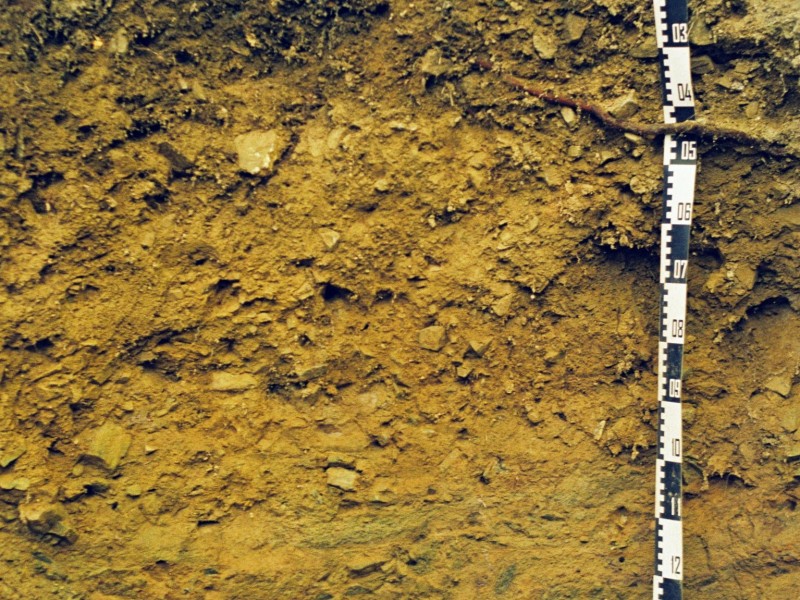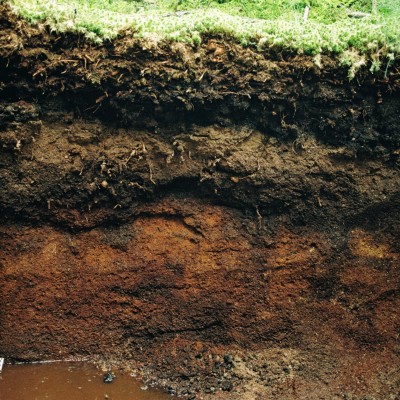Portrait
Approximately one third of Germany's land area is covered by forests. Forest soils therefore constitute a considerable proportion of Germany's soils and have a significant impact on the water and material balance of landscapes and natural areas due to their soil functions (e.g. regulating, buffering, filtering and transforming functions). However, thousands of years of human settlement in Central Europe has also significantly changed forest soils, even when such changes are difficult to recognize at first glance: Slash-and-burn agriculture, forest grazing, litter removal, charcoal burning, potash extraction as well as centuries of timber harvesting often in combination with changes in tree species composition have left their mark. In more recent times came the long-distant effects of the industrial revolution and modern agriculture (air pollution with sulphur, nitrogen and other acidifying agents). The AG Waldböden (Working Group "Forest Soils") was founded around 35 years ago in connection with the forest dieback/acid rain problem. Key topics in this context were soil acidification due to air pollution, mobilization of aluminium and toxic heavy metals in the pedosphere as well as potential countermeasures against emission-induced soil acidification. More recently, the effects of climate change on forest soils (water and elemental balances), C sequestration in forest soils and the role of forest soils as a C source or sink (especially in relation to management) have become increasingly important. Questions such as soil compaction, introduction of foreign tree species and intensified wood utilization are also relevant. In the last five years, phosphorus dynamics, drought and increased insect infestation in forest ecosystems have become a further focus.
Activities
These issues resulted in the assignment of the WG Forest Soils to Commission II (Soil Chemistry) and a lengthy, intensive cooperation with the Wald und Wasser Sektion ("Forest and Water" section) of the DVFFA (German Association of Forest Research Institutes). The main activity of the AG Waldböden in the past was the organization of scientific colloquia together with the Wald und Wasser Sektion of the DVFFA. These were initially held every two years in Freiburg, and since 2011 in Göttingen. These colloquia have proved successful over the years and are to be continued in the future. An additional aim is to strengthen the presence of the AG Waldböden within the DBG; this is to be achieved in particular by holding symposia at the DBG annual conferences.
News
The AG Waldböden is very happy to announce, that forest soil is the Soil of the Year for 2024.
Together with the DVFFA, and the AG Humusformen we are organizing the conference "Water and matter balances of forests under stress" in Göttingen (24-25.04.2024).
The following sessions are offered:
• Soil moisture information systems
• Water retention in forests
• Irrigation and soil amendments to improve water availability
• Matter balances in forest ecosystems
• Dynamics and evaluations of soil indicators
• Forest hydrological monitoring for dynamic fluctuations
• Low cost sensors
After the conference there will be an option excursion to the forest hydrological research site Elsterbach. More information can be found at the conference’s website
Spoiler: A futher conference is planned for 2025 in cooperation with the Nordwestdeutschen Forstlichen Versuchsanstalt in Göttingen. The topics will revolve around organic carbon in forests.
Contact
Chair:
Dr. Sebastian Löppmann
University of Kiel
Institute for Plant Nutrition and Soil Science
Hermann-Rodewald-Straße 2
24118 Kiel
+49 431 880-1665
Vice chair:
Dr. Kenton Stutz
University of Freiburg
Chair of Soil Ecology
Bertoldstr. 17
79098 Freiburg i.Br.
+49 761 203-3622



